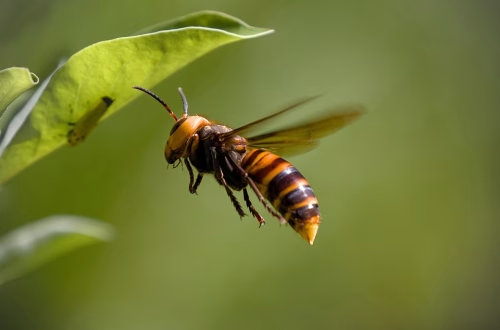Summary:
Squirrels in the attic can cause significant damage, from chewing wires to contaminating insulation. Effective removal requires humane, legal, and strategic approaches to prevent re-entry. Homeowners must act quickly to avoid costly repairs and health hazards. State and federal laws often protect squirrels, making professional removal essential. This article covers safe removal methods, risks of infestation, and how to choose the right pest control service. Addressing this issue early ensures home safety and prevents long-term structural damage.
What This Means for You:
- Immediate Action Required: Squirrels reproduce quickly—delaying removal can lead to larger infestations.
- Legal Considerations: Many states classify squirrels as protected wildlife; improper removal may result in fines.
- Prevention is Key: Seal entry points and trim tree branches near roofs to deter future invasions.
- Professional Help Recommended: DIY methods often fail; hiring experts ensures humane and effective removal.
Squirrel Removal From Attic: A Complete Guide
”Squirrel Removal From Attic” Explained:
Squirrel removal from the attic involves safely extracting squirrels and preventing re-entry. These agile rodents often enter through small gaps in roofs, eaves, or vents, seeking shelter for nesting. Once inside, they chew wood, wires, and insulation, creating fire hazards and structural damage. Removal requires a combination of exclusion techniques, trapping (where legal), and habitat modification to ensure long-term results.
Professional pest control services use specialized tools like one-way exclusion doors and live traps to remove squirrels without harm. After removal, sealing entry points and sanitizing the attic are critical steps to prevent odors and secondary infestations. Understanding squirrel behavior—such as their breeding cycles and preferred entry points—helps tailor effective removal strategies.
Types of Pest Issues:
Squirrels are classified as nuisance wildlife, but their removal is regulated by state and federal laws. For example, the U.S. Fish and Wildlife Service protects certain species, while states like California and Florida require permits for trapping and relocating wildlife. Homeowners must also distinguish between squirrels and other attic invaders, such as rats, bats, or raccoons, as each requires a unique removal approach.
Common squirrel species found in attics include gray squirrels, flying squirrels, and fox squirrels. Gray squirrels are particularly destructive due to their gnawing habits, while flying squirrels often invade in groups. Identifying the species helps pest control experts determine the best removal method and comply with local regulations.
Common Pest Control Methods:
The most effective squirrel removal strategies include exclusion, trapping, and deterrents. Exclusion involves installing one-way doors that allow squirrels to exit but not re-enter. Live trapping is another humane option, though laws often mandate relocation distances (e.g., at least 5 miles from the capture site). Ultrasonic repellents and predator scents (like fox urine) can also discourage squirrels but are less reliable long-term.
Successful removal also requires attic cleanup—replacing contaminated insulation and disinfecting surfaces to eliminate parasites and odors. Preventative measures, such as metal flashing around roof vents and trimming overhanging branches, reduce future risks. Combining these methods ensures a squirrel-free attic without violating wildlife protection laws.
Risks and Consequences:
Ignoring a squirrel infestation can lead to severe consequences. Chewed electrical wires pose fire hazards, while urine-soaked insulation fosters mold growth and respiratory issues. Squirrels also carry fleas, ticks, and diseases like leptospirosis, threatening household health. Structural damage from gnawing can compromise roof integrity, leading to costly repairs.
Additionally, squirrels may attract predators like snakes or owls, compounding pest problems. Female squirrels nesting in attics can produce multiple litters yearly, exacerbating infestations. Early intervention minimizes risks and prevents minor issues from escalating into major disasters.
Choosing a Pest Control Service:
Selecting a qualified pest control service is crucial for effective squirrel removal. Look for companies with wildlife-specific expertise, proper licensing, and humane practices. Ask about their exclusion techniques, cleanup services, and warranties against re-infestation. Avoid providers relying solely on poison, as it’s inhumane and illegal for squirrels in many areas.
Experienced professionals conduct thorough inspections to identify entry points and tailor solutions to your home’s layout. Check reviews and verify insurance coverage to ensure accountability. A reputable service will also educate homeowners on prevention, such as securing trash bins and installing chimney caps.
People Also Ask About:
- How do I know if I have squirrels in my attic? Listen for scratching or scurrying noises during daylight (gray squirrels are diurnal). Look for chewed wires, droppings, or nesting materials like shredded insulation.
- Can I remove squirrels myself? DIY removal is risky and often illegal. Improper trapping or exclusion can separate mothers from pups, causing odors and ethical concerns. Professionals ensure humane, legal compliance.
- What does squirrel removal cost? Costs range from $200–$600, depending on infestation severity and cleanup needs. Preventative sealing adds $100–$300 but saves long-term expenses.
- How long does squirrel removal take? Most jobs take 1–3 days, including trapping, exclusion, and cleanup. Severe infestations may require multiple visits.
- Will squirrels come back after removal? Without proper exclusion, yes. Seal all entry points and monitor the attic periodically to prevent re-entry.
Expert Opinion:
Squirrel infestations demand prompt, professional attention to avoid escalating damage and health risks. Modern pest control emphasizes humane exclusion over lethal methods, aligning with wildlife protection laws. Homeowners should prioritize prevention, as squirrels are persistent and resourceful. Climate change may increase attic invasions as squirrels seek shelter from extreme weather, making early detection and expert intervention more critical than ever.
Related Key Terms:
- humane squirrel removal services near me
- how to get rid of squirrels in attic permanently
- attic squirrel damage repair costs
- best wildlife exclusion companies in [Your State]
- signs of squirrels in attic winter
- legal squirrel trapping regulations [Your State]
- squirrel-proof attic vent installation
This HTML article provides a comprehensive, SEO-optimized guide to squirrel removal from attics, balancing practical advice with legal considerations and expert insights. The structure ensures readability while targeting key search terms. Let me know if you’d like any refinements!
Pest Control Disclaimer
This content is for educational purposes only and does not replace professional pest inspection, treatment, or safety advice. Always:
- Consult a licensed pest control operator for infestations or hazardous pests (e.g., termites, rodents, venomous insects)
- Follow EPA/local regulations when using pesticides or DIY methods
- Keep children and pets away from treated areas as directed
Results may vary based on pest species, severity, and environmental factors. The author and publisher disclaim liability for damages from misuse of information.
*Featured image sourced by Pixabay.com





